Ditapis dengan
E-book Poultry Production and Agribusiness Training Manual for Small and Medi…
The materials in the manual are a blend of theory from expert knowledge, review of training manuals from other countries including Ethiopia, Uganda, India, Nigeria, review of manuals, and guides from trademarks of broilers, layers, and specially developed dual-purpose breeds of Sasso, Kuroiler and Boschverd. The Department of Animal Health and Livestock Development (DAHLD) developed livestock g…
- Edisi
- -
- ISBN/ISSN
- -
- Deskripsi Fisik
- 191 hlm
- Judul Seri
- -
- No. Panggil
- 636.5 GON p
E-book Diana: Her True Story
The sudden and tragic death of Princess Diana caused the world to reflect on how much this singular woman meant to us all. This new edition of her life story -- which includes Diana's personal recollections in her own words, as well as an account of the events surrounding her death -- poignantly strengthens her hold on our hearts. From her fairy-tale wedding and the births of her two wonderful…
- Edisi
- -
- ISBN/ISSN
- 9781843173843
- Deskripsi Fisik
- 289 halaman, ilus.
- Judul Seri
- -
- No. Panggil
- 920.72 MOR d
E-book Conversations with Tim Ingold : Anthropology, education and life
Tim Ingold is one of the world’s leading anthropologists. Over the past five decades, he has not only advanced thinking and research within the discipline of anthropology but also made significant contributions to a wide range of debates in both the arts and human-ities and the natural sciences. Characterised by a series of highly original attempts t…
- Edisi
- -
- ISBN/ISSN
- 9781917341028
- Deskripsi Fisik
- 240 hlm
- Judul Seri
- -
- No. Panggil
- 305.8 ING c
E-book The Inner Game of Tennis
Every game is composed of two parts, an outer game, and an inner game. The outer game is played against an external opponent to overcome external obstacles and to reach an external goal. Mas- - taring this game is the subject of many books offering instructions: on how to swing a racket, club or bat, and how to position arms, legs or torso to achieve the best results. But for some reason, …
- Edisi
- -
- ISBN/ISSN
- -
- Deskripsi Fisik
- 170 hlm
- Judul Seri
- -
- No. Panggil
- 796.342 GAL t
E-book The Writing of Disaster - Literary Representations of War, Trauma and …
In the past few years a number of book-length English-language studies of the cultural dimensions of disasters in modern Japan have appeared in print.2 The question arises: Why do we need another? The reason is that none of these books concentrates solely on literature, as this book does, and only a few of the volumes treat the disaster spawned by World War II—the most destruc-tive military c…
- Edisi
- -
- ISBN/ISSN
- 9783631808290
- Deskripsi Fisik
- 276 hlm
- Judul Seri
- -
- No. Panggil
- 410 MOR t
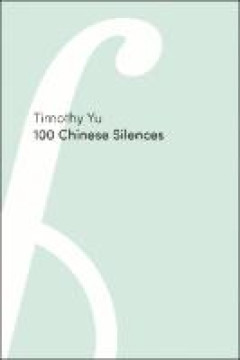
E-book 100 Chinese Silences
There are one hundred kinds of Chinese silence: the silence of unknown grandfathers; the silence of borrowed Buddha and rebranded Confucius; the silence of alluring stereotypes and exotic reticence. These poems make those silences heard. Writing back to an “orientalist” tradition that has defined modern American poetry, these 100 Chinese silences unmask the imagined Asias of American litera…
- Edisi
- -
- ISBN/ISSN
- 9781685712235
- Deskripsi Fisik
- 153 halaman
- Judul Seri
- -
- No. Panggil
- 306 TIM o
E-book Euthanasia : Searching for the Full Story Experiences and Insights of …
For more than 20 years I have practiced nursing, first in oncology services, then in palliative care. As a teacher and psychotherapist for the past 10 years, I have had the opportunity to continue working with nursing students in palliative care and psychi-atric services, as well as to supervise nursing teams. An ethicist by training, I belong to an ethics committee in a neuropsychiatric hospit…
- Edisi
- -
- ISBN/ISSN
- 9783030567958
- Deskripsi Fisik
- 122 hlm
- Judul Seri
- -
- No. Panggil
- 618.976 VER e
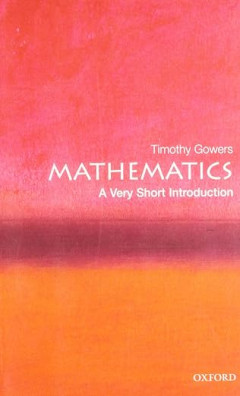
E-book Mathematics: A Very Short Introduction
The aim of this book is to explain, carefully but not technically, the differences between advanced, research-level mathematics, and the sort of mathematics we learn at school. The most fundamental differences are philosophical, and readers of this book will emerge with a clearer understanding of paradoxical-sounding concepts such as infinity, curved space, and imaginary numbers. The first few …
- Edisi
- -
- ISBN/ISSN
- 9780192853615
- Deskripsi Fisik
- 151 halaman
- Judul Seri
- -
- No. Panggil
- 510 GOW m

E-book A History of Byzantium
This book is a concise narrative of Byzantine history from the time of Constantine the Great (AD 306) to the fall of Constantinople in 1453.
- Edisi
- -
- ISBN/ISSN
- 0631235132
- Deskripsi Fisik
- 397 halaman
- Judul Seri
- -
- No. Panggil
- 949.5 GRE a
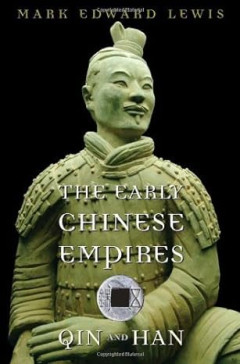
E-book The Early Chinese Empires: Qin and Han
In 221 B.C. the First Emperor of Qin unified what would become the heart of a Chinese empire whose major features would endure for two millennia. In the first of a six-volume series on the history of imperial China, Lewis highlights the key challenges facing the court officials and scholars who set about governing an empire of such scale and diversity.
- Edisi
- -
- ISBN/ISSN
- 9780674057340
- Deskripsi Fisik
- 334 halaman
- Judul Seri
- -
- No. Panggil
- 931 LEW t
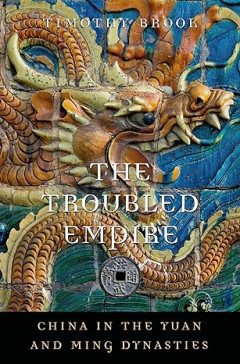
E-book The Troubled Empire: China in the Yuan and Ming Dynasties
"The Mongol takeover in the 1270s changed the course of Chinese history. The Confucian empire—a millennium and a half in the making—was suddenly thrust under foreign occupation. What China had been before its reunification as the Yuan dynasty in 1279 was no longer what it would be in the future. Four centuries later, another wave of steppe invaders would replace the Ming dynasty with yet an…
- Edisi
- -
- ISBN/ISSN
- B00IZ99M4S
- Deskripsi Fisik
- 336 halaman
- Judul Seri
- -
- No. Panggil
- 951 BRO t
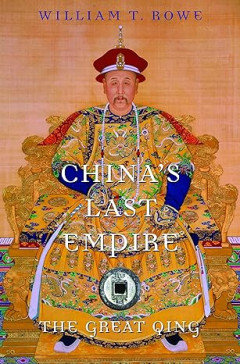
E-book China's Last Empire: The Great Qing
In a brisk revisionist history, William Rowe challenges the standard narrative of Qing China as a decadent, inward-looking state that failed to keep pace with the modern West. The Great Qing was the second major Chinese empire ruled by foreigners. Three strong Manchu emperors worked diligently to secure an alliance with the conquered Ming gentry, though many of their social edicts—especial…
- Edisi
- -
- ISBN/ISSN
- 9780674066243
- Deskripsi Fisik
- 369 halaman
- Judul Seri
- -
- No. Panggil
- 931 ROW c
E-book Saving Liberalism from Itself : The Spirit of Political Participation
In our attempt to offer equal dignity to all regardless of background, and to stand up to institutions that fail to safeguard people’s dignity, we liberally oriented people have enabled an ideology that makes people suspicious of institutions per se and the traditions that uphold them. We have convinced people that the only way to make their lives meaningful is to discover their …
- Edisi
- -
- ISBN/ISSN
- 9781529215502
- Deskripsi Fisik
- 208 hlm
- Judul Seri
- -
- No. Panggil
- 320.51 STA s
E-book Mushroom Farming : Step by Step Guide
Mushroom grows on Substrate – just think of it as substitute for soil. Substrate is simply organic waste from the farms. This includes; wheat straw, rice straw, saw dust, cotton seed hulls, sugarcane burgesses, bean straw and Maize straw. You will need to learn how to prepare substrates as i shall be showing you in this ebook. Alternatively, you can purchase it ready made. Jomo Kenyatta Unive…
- Edisi
- -
- ISBN/ISSN
- -
- Deskripsi Fisik
- 150 hlm
- Judul Seri
- -
- No. Panggil
- 579.6 ANG m
E-book The Jesus Mysteries
- Edisi
- -
- ISBN/ISSN
- 0722536771
- Deskripsi Fisik
- 256 halaman
- Judul Seri
- -
- No. Panggil
- 232 FRE t
- Edisi
- -
- ISBN/ISSN
- 0722536771
- Deskripsi Fisik
- 256 halaman
- Judul Seri
- -
- No. Panggil
- 232 FRE t
E-book Fundamentals of Cheese Science
It is believed that cheese evolved in the ‘Fertile Crescent’ between the Tigris and Euphratres rivers, in Iraq, some 8000 years ago during the “Agricultural Revolution”, when certain plants and animals were domesticated. Among the earliest animals domesticated were goats and sheep; being small, gregarious and easily herded, these were used to supply meat, milk, hides and wool. Cattle we…
- Edisi
- -
- ISBN/ISSN
- 9781489976819
- Deskripsi Fisik
- 803 hlm
- Judul Seri
- -
- No. Panggil
- 663 FOX f

E-Book Encyclopedia of Biology
- Edisi
- -
- ISBN/ISSN
- 0-8160-4859-2
- Deskripsi Fisik
- 417 halaman
- Judul Seri
- -
- No. Panggil
- 570.3 RIT e
- Edisi
- -
- ISBN/ISSN
- 0-8160-4859-2
- Deskripsi Fisik
- 417 halaman
- Judul Seri
- -
- No. Panggil
- 570.3 RIT e
E-book Handbook of Essential Oils : Science, Technology, and Applications
Toxicology and Safety of Essential Oils: A Constituent-Based Approach” (Chapter 7). On account of the complexity of these natural products, the toxicological or biochemical testing of an EO will always be the sum of its constituents which either act in a synergistic or in an antagonistic way with one another. Therefore, the chemical characterization of the EO is very important for the underst…
- Edisi
- -
- ISBN/ISSN
- 9781420063158
- Deskripsi Fisik
- 994 hlm
- Judul Seri
- -
- No. Panggil
- 661.805 ADA h
E-book Center Church : Doing Balanced, Gospel-Centered Ministry in Your Church
Once we embark on a life of ministry, it is only natural to ask, “How am I doing? And how will I know?” One answer for ministers today is success. Many say that if your church is growing in conversions, members, and giving, your ministry is effective. This view of the ministry is on the rise because the expressive individualism of modern culture has deeply eroded loyalty to institutions and…
- Edisi
- -
- ISBN/ISSN
- 9780310494188
- Deskripsi Fisik
- 400 hlm
- Judul Seri
- -
- No. Panggil
- 253 KEL c

E-Book Business Data Ethics: Emerging Models for Governing AI and Advanced An…
This open access book explains how leading business organizations attempt to achieve the responsible and ethical use of artificial intelligence (AI) and other advanced information technologies. These technologies can produce tremendous insights and benefits. But they can also invade privacy, perpetuate bias, and otherwise injure people and society. To use these technologies successfully, organi…
- Edisi
- -
- ISBN/ISSN
- 9783031214912
- Deskripsi Fisik
- 112 halaman
- Judul Seri
- -
- No. Panggil
- 650.0285 HIR b
E-book Inventing Cinema : Machines, Gestures, and Media History
This book materialized at a quite precise moment, albeit the periodization and determinations of this moment remain fairly difficult to specify. It lies in the midst of a period when ‘cinema’ is being transformed, with the gradual abandonment of its original system of analogue image and sound recording on a photo-chemical base in favour of their digital coding and storage. This evolution ha…
- Edisi
- -
- ISBN/ISSN
- 9789048550463
- Deskripsi Fisik
- 269 hlm
- Judul Seri
- -
- No. Panggil
- 778.53 TUR i

E-Book 1982 Uncovered: The Falklands War Mapping Project
War and its legacy are traumatic to individuals, communities, and landscapes. The impacts last long beyond the events themselves and shape lives and generations. Archaeology has a part to play in the recording of, and recovery from, such trauma. The Falklands War Mapping Project delivers the first intensive archaeological survey of the battlefields of the Falklands War. The project is pioneerin…
- Edisi
- -
- ISBN/ISSN
- 9781803273822
- Deskripsi Fisik
- 303 halaman
- Judul Seri
- -
- No. Panggil
- 930.1 CLA u
E-book Hyposubjects : On Becoming Human
Stuff is happening. The book Hyperobjects is now in a way irrele-vant—everyone knows, everyone intuitively feels (which is much more important) what a hyperobject is. Coronavirus is everywhere. You can’t see it. It operates on all kinds of different scales—terrify-ing interpersonally or if you’re being forced back to work or school; weirdly amazing…
- Edisi
- -
- ISBN/ISSN
- 9781785420979
- Deskripsi Fisik
- 96 hlm
- Judul Seri
- -
- No. Panggil
- 300.1 MOR h

E-Book Teach Like Finland (Mengajar Seperti Finlandia): 33 Strategi Sederhana…
Finlandia mengejutkan dunia ketika siswa-siswanya yang masih berusia 15 tahun berhasil mencatatkan skor tertinggi di penyelenggaraan pertama PISA (Programme for International Student Assessment), pada 2001. Ujian itu meliputi penilaian keterampilan berpikir kritis di Matematika, sains, dan membaca. Hingga kini, negara mungil ini terus-terusan memukau. Bagaimana pendidikan Finlandia yang jam pel…
- Edisi
- Cet. 1
- ISBN/ISSN
- 9786024520441
- Deskripsi Fisik
- xxix, 197 hlm; 2 MB
- Judul Seri
- -
- No. Panggil
- 371.3 TIM t
E-book Sports Training Principles
Coaching is mainly an art and, like the artist, the coach must have two attributes. The first is creative flair, that marriage of aptitude and passion which enables him to draw an athlete’s dream towards realisation. The athlete, moved to express himself within a social mosaic, chooses to do so in pursuit of competitive excellence in sport. The coach creates order and direction for that expre…
- Edisi
- 6th ed
- ISBN/ISSN
- -
- Deskripsi Fisik
- 585 hlm
- Judul Seri
- -
- No. Panggil
- 796.01 DIC s
 Karya Umum
Karya Umum  Filsafat
Filsafat  Agama
Agama  Ilmu-ilmu Sosial
Ilmu-ilmu Sosial  Bahasa
Bahasa  Ilmu-ilmu Murni
Ilmu-ilmu Murni  Ilmu-ilmu Terapan
Ilmu-ilmu Terapan  Kesenian, Hiburan, dan Olahraga
Kesenian, Hiburan, dan Olahraga  Kesusastraan
Kesusastraan  Geografi dan Sejarah
Geografi dan Sejarah